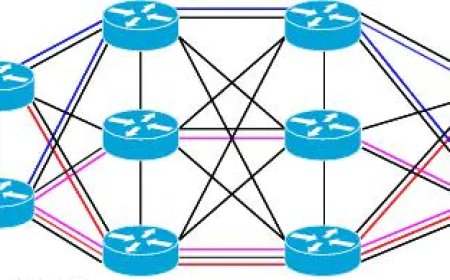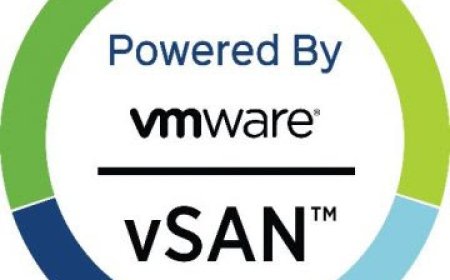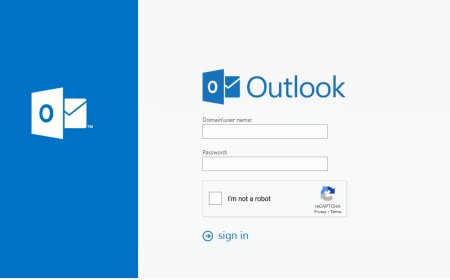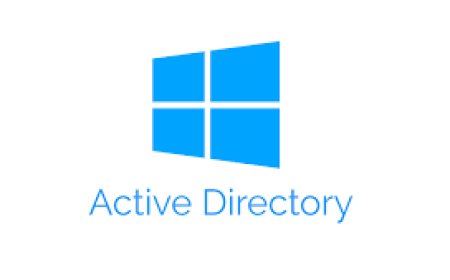Essential Cybersecurity Tools - Pros & Cons
Here are some essential cybersecurity tools every organization should consider integrating into their security arsenal. Each one of these tools are important and really useful but you need to double check your requirement to start using any of them. Otherwise, your time, your energy and your money will be wasted.
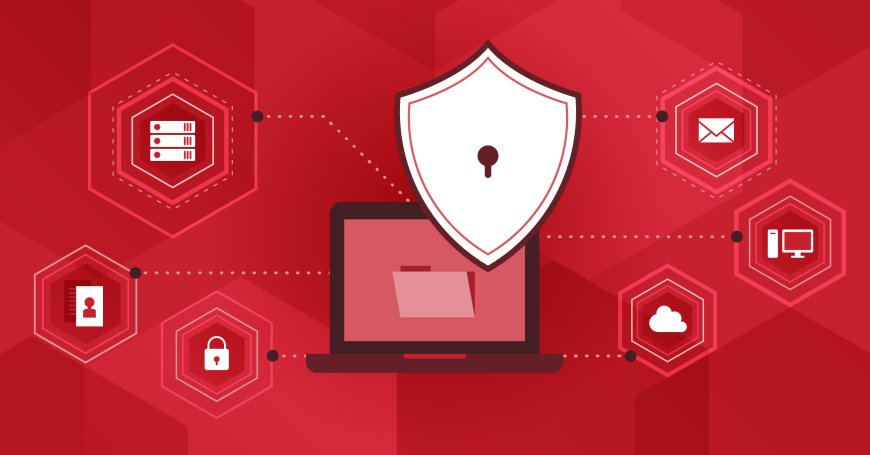
Information Gathering Tools
Information gathering is a crucial phase in cybersecurity, providing valuable insights into potential vulnerabilities and attack vectors. Let's delve into some essential information gathering tools that can assist security professionals in gathering intelligence about their target environments:
1. Nmap (Network Mapper): Nmap is a powerful open-source network scanning tool used for discovering hosts and services on a computer network, thus creating a map of the network. It employs various scanning techniques, including TCP SYN scan, UDP scan, and version detection, to provide comprehensive information about the network topology, open ports, and running services.
Pros:
- Highly flexible and customizable scanning options.
- Supports scripting for automated tasks and advanced functionality.
- Efficiently detects hosts and services even in complex network environments.
Cons:
- Can be resource-intensive, especially during intensive scans.
- May raise suspicion or trigger security alerts in some network environments.
2. Shodan: Shodan is a search engine that indexes internet-connected devices and services, including webcams, routers, servers, and IoT devices. Unlike traditional search engines, Shodan allows users to search for specific types of devices based on various criteria, such as geographical location, operating system, or open ports, providing valuable insights for security professionals.
Pros:
- Offers a unique perspective on internet-connected devices and their vulnerabilities.
- Provides detailed information about exposed services, including banners and metadata.
- Enables targeted searches for specific devices or vulnerabilities.
Cons:
- Requires a paid subscription for full access to advanced search features.
- May raise ethical concerns when used for reconnaissance without proper authorization.
- Limited coverage of certain devices and networks may impact the completeness of search results.
3. Maltego: Maltego is a powerful data visualization and link analysis tool used for mapping relationships between people, organizations, and online entities. It aggregates information from various open-source intelligence (OSINT) sources and presents it in a visually intuitive format, making it easier for analysts to identify connections and patterns.
Pros:
- Streamlines the process of gathering and analyzing OSINT data.
- Provides a graphical interface for visualizing complex relationships and networks.
- Integrates with various data sources, including social media, DNS records, and online databases.
Cons:
- Requires a paid subscription for access to advanced features and data sources.
- Steep learning curve for new users due to the complexity of data manipulation and analysis.
- Limited to the data sources supported by its transforms, which may vary in quality and coverage.
4. TheHarvester: TheHarvester is a reconnaissance tool used for gathering email addresses, subdomains, virtual hosts, and employee names from various public sources, including search engines, social networks, and DNS records. It provides valuable information for conducting targeted phishing attacks, domain reconnaissance, and footprinting exercises.
Pros:
- Simple and easy-to-use command-line interface.
- Supports multiple data sources, including Google, Bing, LinkedIn, and DNSDumpster.
- Customizable search options for refining results based on specific criteria.
Cons:
- Limited to publicly available information and may not uncover hidden or proprietary data.
- Relies on external APIs and data sources, which may have usage limitations or restrictions.
- Requires careful consideration of legal and ethical implications when conducting reconnaissance activities.
5. Recon-NG: Recon-NG is a full-featured reconnaissance framework built on the Python scripting language, designed to automate the process of gathering intelligence from various online sources. It provides a modular architecture with built-in modules for performing tasks such as DNS enumeration, email harvesting, and social media analysis.
Pros:
- Extensible framework with support for custom modules and scripts.
- Integrates with popular OSINT APIs and data sources, including Shodan and Twitter.
- Automated workflow for streamlining the reconnaissance process and generating actionable intelligence.
Cons:
- Requires familiarity with the command-line interface and scripting concepts.
- Limited documentation and community support compared to other tools.
- May generate a significant amount of noise and false positives if not properly configured.
6. Amass: Amass is an open-source network mapping and reconnaissance tool used for discovering external assets, such as subdomains and associated infrastructure, from various data sources, including DNS records, certificate transparency logs, and web archives. It provides comprehensive coverage of internet-facing assets and helps organizations identify potential attack vectors and security risks.
Pros:
- Supports passive and active reconnaissance techniques for gathering intelligence.
- Integrates with multiple data sources and APIs, including Shodan, Censys, and VirusTotal.
- Generates detailed reports and visualizations to aid in analysis and decision-making.
Cons:
- Requires a deep understanding of networking and DNS fundamentals for effective use.
- May generate a large volume of data, requiring careful filtering and analysis.
- Limited to publicly accessible information and may not uncover hidden or proprietary assets.
7. Censys: Censys is a public search engine and data repository that provides a comprehensive view of the internet's infrastructure, including devices, services, and protocols. It offers advanced search capabilities and data visualization tools for exploring internet-wide trends, identifying security vulnerabilities, and monitoring digital certificates and SSL/TLS configurations.
Pros:
- Offers a user-friendly web interface for searching and analyzing internet-wide data.
- Provides detailed insights into device configurations, vulnerabilities, and SSL/TLS certificates.
- Integrates with popular security tools and platforms, such as Splunk and Elasticsearch.
Cons:
- Requires a paid subscription for access to advanced search features and historical data.
- Limited coverage of certain devices and networks may impact the completeness of search results.
- May raise privacy concerns when used for reconnaissance without proper authorization.
8. OSINT Framework: The OSINT (Open Source Intelligence) Framework is a collection of resources and tools for conducting open-source intelligence gathering and analysis. It includes a curated list of websites, tools, and techniques for gathering information from publicly available sources, such as social media, online databases, and government websites.
Pros:
- Consolidates a wide range of OSINT resources and tools into a single repository.
- Provides categorized lists of resources for specific tasks, such as domain reconnaissance and social media analysis.
- Offers a collaborative platform for sharing knowledge and best practices within the OSINT community.
Cons:
- Requires manual navigation and exploration of external websites and tools.
- Quality and reliability of information may vary across different sources and platforms.
- Limited to publicly accessible information and may not uncover proprietary or restricted data.
9. Gobuster: Gobuster is a command-line tool used for brute-forcing directories and files on web servers. It recursively scans web applications and websites for hidden paths, directories, and files by sending HTTP requests with custom wordlists or predefined dictionaries. It is commonly used for web application penetration testing and vulnerability assessment.
Pros:
- Fast and efficient directory and file enumeration with multi-threaded scanning capabilities.
- Supports custom wordlists and dictionary-based attacks for targeting specific directories and files.
- Provides detailed output and status updates during the scanning process.
Cons:
- Can generate a significant amount of HTTP traffic, potentially triggering security alerts or rate limiting measures.
- May produce false positives or irrelevant results if not properly configured or filtered.
- Limited to directories and files accessible via HTTP or HTTPS protocols, excluding other network services.
Exploitation Tools:
Exploitation tools are instrumental in testing the security posture of systems, applications, and networks by identifying and exploiting vulnerabilities. Let's delve into some of the essential exploitation tools widely used by cybersecurity professionals:
1. Burp Suite: Burp Suite is a comprehensive web application security testing platform that provides a range of tools for analyzing, testing, and exploiting web applications. It includes a proxy, scanner, intruder, repeater, sequencer, and decoder, among other features, enabling security professionals to identify and exploit vulnerabilities such as SQL injection, cross-site scripting (XSS), and server-side request forgery (SSRF).
Pros:
- User-friendly interface with intuitive tools and workflows.
- Supports manual and automated testing of web applications.
- Extensible platform with a vibrant community and numerous plugins available.
Cons:
- Requires a solid understanding of web application security concepts for effective use.
- Some advanced features are only available in the paid version (Burp Suite Professional).
- May generate false positives or miss certain vulnerabilities if not properly configured.
2. Metasploit Framework: Metasploit Framework is a widely-used open-source penetration testing tool that provides a range of exploits, payloads, auxiliary modules, and post-exploitation tools for testing and exploiting vulnerabilities in systems and networks. It simplifies the process of identifying, exploiting, and validating vulnerabilities, making it an invaluable resource for security professionals and ethical hackers.
Pros:
- Comprehensive collection of exploits and payloads for various platforms and vulnerabilities.
- Modular architecture with support for custom scripting and automation.
- Integration with other security tools and frameworks, such as Nmap and Nessus.
Cons:
- Can be overwhelming for beginners due to the complexity of its interface and features.
- Some exploits may be outdated or unreliable, requiring manual verification and testing.
- May raise legal and ethical concerns when used without proper authorization or consent.
3. SQLMap: SQLMap is an open-source penetration testing tool specifically designed for detecting and exploiting SQL injection vulnerabilities in web applications and databases. It automates the process of identifying SQL injection flaws, dumping database contents, and executing SQL commands, making it a valuable tool for security assessments and ethical hacking engagements.
Pros:
- Simple command-line interface with easy-to-use options and flags.
- Supports various database management systems (DBMS) and SQL injection techniques.
- Provides detailed reports and logs for documenting findings and exploitation attempts.
Cons:
- Limited to SQL injection vulnerabilities and may not detect other types of web application flaws.
- Can be resource-intensive, especially during comprehensive scans or data extraction.
- May trigger security alerts or intrusion detection systems (IDS) if not properly configured or throttled.
4. ZAP (Zed Attack Proxy): ZAP is an open-source web application security testing tool that provides automated scanning, active and passive security testing, and vulnerability assessment capabilities. It acts as a proxy intercepting and modifying HTTP and HTTPS traffic between web browsers and web applications, allowing security professionals to identify and exploit vulnerabilities in real-time.
Pros:
- User-friendly interface with point-and-click functionality and automation features.
- Supports a wide range of web application security tests, including OWASP Top 10 vulnerabilities.
- Integrates with other security tools and frameworks, such as Burp Suite and Selenium.
Cons:
- May produce false positives or miss certain vulnerabilities, requiring manual verification.
- Limited to web applications accessible via HTTP or HTTPS protocols, excluding other attack vectors.
- Requires careful configuration and tuning to avoid disrupting web application functionality.
5. ExploitDB: ExploitDB is a comprehensive archive of exploits and vulnerabilities maintained by Offensive Security. It provides a searchable database of exploits, shellcodes, and security advisories for various platforms, applications, and operating systems, enabling security professionals to research, analyze, and exploit known vulnerabilities in their assessments and engagements.
Pros:
- Extensive collection of exploits and vulnerabilities, regularly updated by the security community.
- Provides detailed information about exploit techniques, affected systems, and patch status.
- Enables researchers to contribute their own exploits and security findings to the database.
Cons:
- May contain unverified or outdated exploits, requiring careful validation and testing.
- Limited to publicly available information and may not cover proprietary or undisclosed vulnerabilities.
- Requires a solid understanding of exploit development and vulnerability analysis concepts for effective use.
6. Core Impact: Core Impact is a commercial penetration testing tool developed by Core Security that provides advanced exploitation capabilities for testing and assessing the security posture of networks, systems, and applications. It offers a range of automated exploits, post-exploitation modules, and reporting features, making it a preferred choice for security professionals and penetration testers.
Pros:
- Comprehensive set of exploits and attack vectors for testing complex environments.
- Streamlined workflow with automated vulnerability scanning and exploitation.
- Provides detailed reports and analytics for documenting findings and recommendations.
Cons:
- High cost of licensing and maintenance, making it less accessible to smaller organizations.
- Requires specialized training and expertise to leverage its full capabilities effectively.
- May raise legal and ethical concerns when used without proper authorization or consent.
7. Cobalt Strike: Cobalt Strike is a commercial penetration testing platform developed by Strategic Cyber LLC that provides advanced threat emulation, post-exploitation, and command-and-control (C2) capabilities for red teaming and adversarial simulations. It includes a range of features such as beaconing, lateral movement, privilege escalation, and data exfiltration, making it a powerful tool for emulating sophisticated cyber attacks.
Pros:
- Comprehensive set of features for simulating real-world cyber threats and attack scenarios.
- Modular framework with support for custom scripting, tool integration, and automation.
- Provides stealthy and covert communication channels for evading detection and monitoring.
Cons:
- High cost of licensing and training, limiting its adoption to larger enterprises and security firms.
- Requires a deep understanding of offensive security concepts and tactics for effective use.
- May raise legal and ethical concerns when used for unauthorized or malicious purposes.
Password Cracking Tools
Password cracking tools are essential for security professionals and ethical hackers to assess the strength of passwords and identify potential vulnerabilities within systems. Let's delve into some of the prominent password cracking tools available:
1. John The Ripper: John The Ripper is one of the most widely used open-source password cracking tools. It supports various password cracking techniques, including dictionary attacks, brute-force attacks, and hybrid attacks. John can crack passwords for a variety of operating systems and applications, making it a versatile tool for security assessments.
Pros:
- Supports multiple platforms, including Windows, Linux, and macOS.
- Highly customizable with support for custom wordlists and rule sets.
- Offers GPU acceleration for faster password cracking performance.
Cons:
- Command-line interface may be intimidating for novice users.
- Requires a solid understanding of password cracking techniques and algorithms.
- Limited to offline password cracking and may not work against certain encryption schemes.
2. Hydra: Hydra is a powerful online password cracking tool that supports a wide range of protocols and services, including SSH, FTP, Telnet, HTTP, and many others. It allows security professionals to perform brute-force attacks, dictionary attacks, and hybrid attacks against remote authentication services, enabling them to identify weak or default credentials.
Pros:
- Supports parallelized attacks for faster password cracking performance.
- Provides support for a vast array of protocols and services.
- Offers built-in options for customizing attack parameters and payloads.
Cons:
- May trigger account lockout mechanisms or intrusion detection systems if not used cautiously.
- Requires access to the target network or service for performing online attacks.
- Limited to password-based authentication and may not work against multi-factor authentication.
3. Hashcat: Hashcat is a high-speed password recovery tool that specializes in cracking hashed passwords. It supports a wide range of hashing algorithms and formats, including MD5, SHA-1, SHA-256, bcrypt, and NTLM, among others. Hashcat leverages the power of GPUs and CPUs to achieve unparalleled performance in cracking passwords.
Pros:
- Supports a vast array of hashing algorithms and formats.
- Provides GPU acceleration for lightning-fast password cracking speeds.
- Offers advanced rule-based attacks for generating custom password candidates.
Cons:
- Command-line interface may be challenging for beginners to navigate.
- Requires a compatible GPU for optimal performance in GPU-accelerated mode.
- May consume significant system resources during intensive cracking operations.
4. OPHCrack: OPHCrack is a popular open-source password cracking tool that specializes in cracking Windows passwords by using rainbow tables. It provides a user-friendly graphical interface and supports both brute-force and dictionary attacks. OPHCrack is commonly used for recovering lost or forgotten passwords on Windows systems.
Pros:
- Offers a user-friendly graphical interface suitable for beginners.
- Utilizes precomputed rainbow tables for faster password recovery.
- Supports various versions of Windows, including Windows XP, Vista, 7, and 10.
Cons:
- Rainbow tables can be large and may require significant storage space.
- Limited to offline password cracking and may not work against complex or strong passwords.
- May not support newer versions of Windows or encryption algorithms.
5. Medusa: Medusa is a command-line-driven password cracking tool that supports multiple protocols and services, including SSH, FTP, Telnet, HTTP, and SMB. It allows security professionals to perform brute-force attacks, dictionary attacks, and custom attacks against remote authentication services, enabling them to test the security of network services.
Pros:
- Supports parallelized attacks for improved performance.
- Provides a wide range of authentication protocols and services.
- Offers detailed logging and reporting features for analyzing cracking attempts.
Cons:
- Command-line interface may be less intuitive for novice users.
- Requires access to the target network or service for performing online attacks.
- May trigger account lockout mechanisms or intrusion detection systems if not used cautiously.
6. THC-Hydra: THC-Hydra is a parallelized online password cracking tool similar to Hydra. It supports a vast array of protocols and services, including FTP, HTTP, HTTPS, SMB, and many others. THC-Hydra is highly configurable and can perform brute-force attacks, dictionary attacks, and custom attacks against remote authentication services.
Pros:
- Provides support for a wide range of protocols and services.
- Supports parallelized attacks for faster password cracking performance.
- Offers detailed status updates and progress indicators during cracking attempts.
Cons:
- May trigger account lockout mechanisms or intrusion detection systems if used recklessly.
- Requires access to the target network or service for performing online attacks.
- Command-line interface may be intimidating for inexperienced users.
7. Cain & Abel: Cain & Abel is a comprehensive password recovery tool for Windows systems that supports various password cracking techniques, including dictionary attacks, brute-force attacks, and rainbow table attacks. It can recover passwords for various protocols and services, including Windows authentication, FTP, and SMTP.
Pros:
- Offers a user-friendly graphical interface with intuitive tools and features.
- Supports a wide range of password cracking techniques and algorithms.
- Provides additional network analysis and sniffing capabilities.
Cons:
- Limited to Windows-based systems and may not work against other operating systems.
- Has not been updated for several years, leading to compatibility issues with newer Windows versions.
- May trigger security alerts or anti-virus detections due to its hacking-related functionalities.
Vulnerability Scanning Tools
Vulnerability scanning is a critical component of any cybersecurity strategy, enabling organizations to proactively identify and remediate potential security weaknesses within their systems and networks. Let's explore some prominent vulnerability scanning tools utilized by security professionals:
1. OpenVAS (Open Vulnerability Assessment System): OpenVAS is an open-source vulnerability scanning and management tool that provides comprehensive vulnerability assessment capabilities. It offers a vast database of known vulnerabilities, plugins for detecting security issues, and a user-friendly web interface for managing scans and generating reports. OpenVAS is widely used by security professionals and organizations seeking a cost-effective solution for vulnerability management.
Pros:
- Open-source and freely available, making it accessible to organizations of all sizes.
- Regularly updated vulnerability database with thousands of plugins for detecting security issues.
- Offers customizable scanning options and detailed reports for assessing and prioritizing vulnerabilities.
Cons:
- Can be resource-intensive and may require dedicated hardware for optimal performance.
- Limited to vulnerability scanning and may not include advanced features such as exploit testing.
- Requires expertise in vulnerability management and IT security for effective deployment and configuration.
2. Nessus: Nessus is a leading commercial vulnerability scanning tool developed by Tenable, offering comprehensive vulnerability assessment capabilities for organizations of all sizes. It provides a wide range of scanning options, including credentialed and non-credentialed scans, compliance auditing, and configuration assessment. Nessus also offers integration with other security tools and platforms for streamlined vulnerability management.
Pros:
- Extensive vulnerability database with frequent updates and new detection plugins.
- Intuitive web-based interface with customizable scanning policies and reporting features.
- Offers advanced features such as malware detection, compliance scanning, and exploit testing.
Cons:
- Requires a commercial license for full access to advanced features and support.
- Can be expensive for small organizations or individual users.
- May generate false positives or miss certain vulnerabilities if not properly configured or tuned.
3. AppScan (IBM Security AppScan): AppScan is a leading commercial application security testing (AST) tool developed by IBM, offering dynamic and static application security testing capabilities. It provides automated scanning of web applications and APIs to identify vulnerabilities such as SQL injection, cross-site scripting (XSS), and insecure configuration settings. AppScan is widely used by organizations seeking to secure their web applications and meet compliance requirements.
Pros:
- Comprehensive application security testing capabilities for identifying vulnerabilities in web applications and APIs.
- Integration with development tools and workflows for automated testing and vulnerability remediation.
- Offers advanced features such as source code analysis, runtime testing, and API security testing.
Cons:
- Requires a commercial license for full access to advanced features and support.
- Can be complex to set up and configure, especially for large or complex applications.
- May produce false positives or miss certain vulnerabilities if not properly configured or tuned.
4. LYNIS: LYNIS is an open-source security auditing tool for Unix/Linux systems, providing system hardening and vulnerability assessment capabilities. It performs a comprehensive audit of the system configuration, software packages, security settings, and file permissions to identify potential security issues and compliance violations. LYNIS is widely used by system administrators and security professionals to improve the security posture of Unix/Linux-based systems.
Pros:
- Open-source and freely available, making it accessible to organizations and individuals.
- Lightweight and portable with minimal dependencies, suitable for resource-constrained environments.
- Provides detailed recommendations and remediation steps for addressing identified vulnerabilities and security issues.
Cons:
- Limited to Unix/Linux systems and may not support other operating systems.
- Focuses primarily on system hardening and configuration auditing, lacking advanced vulnerability scanning capabilities.
- Requires familiarity with Unix/Linux system administration and security concepts for effective use.
5. Retina: Retina is a commercial vulnerability scanning tool developed by BeyondTrust, offering comprehensive vulnerability assessment and management capabilities for organizations of all sizes. It provides automated scanning of network devices, operating systems, and applications to identify vulnerabilities and security weaknesses. Retina also offers integration with other security tools and platforms for streamlined vulnerability management.
Pros:
- User-friendly interface with customizable scanning options and reporting features.
- Extensive vulnerability database with frequent updates and new detection plugins.
- Offers advanced features such as compliance scanning, patch management, and risk assessment.
Cons:
- Requires a commercial license for full access to advanced features and support.
- Can be resource-intensive and may require dedicated hardware for optimal performance.
- May generate false positives or miss certain vulnerabilities if not properly configured or tuned.
6. Nexpose (Rapid7 Nexpose): Nexpose is a commercial vulnerability management tool developed by Rapid7, offering comprehensive vulnerability assessment and risk prioritization capabilities for organizations of all sizes. It provides automated scanning of network assets, cloud environments, and virtual infrastructure to identify vulnerabilities and security weaknesses. Nexpose also offers integration with other security tools and platforms for centralized vulnerability management.
Pros:
- Scalable architecture with support for distributed scanning and centralized management.
- Extensive vulnerability database with frequent updates and new detection plugins.
- Offers advanced features such as risk scoring, asset tagging, and exploit verification.
Cons:
- Requires a commercial license for full access to advanced features and support.
- Can be complex to set up and configure, especially for large or distributed environments.
- May generate false positives or miss certain vulnerabilities if not properly configured or tuned.
Software Engineering Tools
Software engineering tools play a crucial role in the development and testing of secure applications, particularly in identifying and mitigating potential security vulnerabilities. Let's delve into some prominent software engineering tools focused on security testing and assessment:
1. GoPhish: GoPhish is an open-source phishing framework designed for security professionals to simulate phishing attacks and assess an organization's susceptibility to such threats. It provides a user-friendly web interface for creating and launching phishing campaigns, monitoring user interactions, and generating detailed reports. GoPhish enables organizations to educate employees about phishing risks and improve their security awareness.
Pros:
- Easy to set up and configure, with a user-friendly web interface.
- Offers customizable phishing templates and campaign scheduling options.
- Provides detailed analytics and reporting features for assessing campaign effectiveness.
Cons:
- Limited to phishing simulations and may not cover other types of social engineering attacks.
- Requires proper authorization and consent before conducting phishing campaigns.
- May raise ethical concerns if used for malicious purposes or without proper consent.
2. HiddenEye: HiddenEye is an open-source phishing tool that automates the process of creating and launching phishing attacks against various platforms and services, including social media, email, and messaging applications. It provides a command-line interface with support for customizable phishing templates, payload generation, and obfuscation techniques. HiddenEye is commonly used by security professionals and ethical hackers for testing and awareness purposes.
Pros:
- Offers a wide range of phishing templates and attack vectors.
- Supports multiple social media platforms, email services, and messaging applications.
- Provides options for customizing phishing payloads and obfuscating malicious URLs.
Cons:
- Command-line interface may be less intuitive for novice users.
- Limited documentation and community support compared to other tools.
- May raise legal and ethical concerns if used without proper authorization or consent.
3. SocialFish: SocialFish is an open-source social engineering tool designed for conducting spear-phishing and credential harvesting attacks against social media platforms and online services. It provides a user-friendly web interface for creating phishing pages, generating shortened URLs, and tracking user interactions. SocialFish enables security professionals to assess an organization's susceptibility to social engineering attacks and improve their security awareness.
Pros:
- Intuitive web interface with customizable phishing templates and campaign management features.
- Supports multiple social media platforms and online services, including Facebook, Instagram, and Google.
- Provides detailed analytics and reporting capabilities for evaluating campaign effectiveness.
Cons:
- Limited to social engineering attacks and may not cover other types of security threats.
- Requires proper authorization and consent before conducting phishing campaigns.
- May raise ethical concerns if used for malicious purposes or without proper consent.
4. EvilURL: EvilURL is an open-source tool that generates malicious URLs (Uniform Resource Locators) for phishing and social engineering attacks. It provides a command-line interface for creating obfuscated URLs that mimic legitimate websites and services, making them difficult to detect by users and security mechanisms. EvilURL is commonly used by security professionals and ethical hackers for testing and research purposes.
Pros:
- Lightweight and portable tool with a simple command-line interface.
- Generates obfuscated URLs that bypass security filters and detection mechanisms.
- Provides options for customizing URL parameters and payloads for different attack scenarios.
Cons:
- Command-line interface may be less user-friendly for inexperienced users.
- Limited to URL obfuscation and may not cover other aspects of phishing attacks.
- Requires proper authorization and consent before conducting phishing campaigns.
5. Evilginx: Evilginx is an open-source tool designed for conducting man-in-the-middle (MitM) attacks against web-based authentication mechanisms, such as single sign-on (SSO) and two-factor authentication (2FA) systems. It intercepts and captures user credentials during the authentication process, allowing attackers to bypass security controls and gain unauthorized access to protected resources. Evilginx is commonly used by security professionals and ethical hackers for testing and research purposes.
Pros:
- Provides a comprehensive MitM attack framework for intercepting and capturing authentication credentials.
- Supports multiple authentication protocols and services, including OAuth, OpenID Connect, and SAML.
- Offers advanced features such as session hijacking, credential harvesting, and phishing page cloning.
Cons:
- Requires expertise in network security and web application testing for effective use.
- Command-line interface may be less user-friendly for inexperienced users.
- May raise legal and ethical concerns if used for malicious purposes or without proper authorization.
Forensic Tools
Forensic tools are indispensable in the realm of cybersecurity, aiding investigators in uncovering digital evidence, analyzing system artifacts, and piecing together the puzzle of cyber incidents. Here's a look into several noteworthy forensic tools:
1. Sleuth Kit: Sleuth Kit is an open-source forensic toolkit that provides a set of command-line tools for analyzing disk images and file systems. It enables investigators to examine file system structures, recover deleted files, and extract valuable information from disk images. Sleuth Kit supports various file systems, including FAT, NTFS, and ext4, making it a versatile tool for digital investigations.
Pros:
- Open-source and freely available, fostering collaboration and community support.
- Supports a wide range of file systems and disk image formats.
- Provides powerful command-line tools for file system analysis and artifact extraction.
Cons:
- Command-line interface may be less intuitive for inexperienced users.
- Requires a solid understanding of file system structures and forensic principles.
- Limited to disk-based forensics and may not cover other aspects of digital investigations.
2. Autopsy: Autopsy is a feature-rich digital forensic platform built on top of Sleuth Kit, offering a user-friendly graphical interface for conducting forensic investigations. It provides advanced features for disk imaging, file system analysis, keyword searching, and timeline analysis. Autopsy streamlines the forensic process and facilitates collaboration among investigators, making it a popular choice in both law enforcement and corporate environments.
Pros:
- Intuitive graphical interface with drag-and-drop functionality and workflow automation.
- Supports disk imaging, file system analysis, keyword searching, and timeline analysis.
- Integrates with external tools and databases for enhanced functionality and data correlation.
Cons:
- May require substantial system resources, particularly for analyzing large disk images.
- Limited to disk-based forensics and may not cover other aspects of digital investigations.
- Advanced features may be overwhelming for novice users without proper training.
3. Volatility: Volatility is an open-source memory forensics framework designed for analyzing volatile memory (RAM) from live systems and memory dumps. It provides a wide range of plugins and command-line tools for extracting process information, network connections, registry keys, and other artifacts from memory dumps. Volatility is widely used by forensic analysts and incident responders to investigate malware infections, security breaches, and memory-based attacks.
Pros:
- Comprehensive memory forensics capabilities for analyzing live systems and memory dumps.
- Extensive plugin architecture with support for analyzing various operating systems and memory artifacts.
- Provides detailed insights into running processes, network activity, and system configuration.
Cons:
- Command-line interface may be less user-friendly for inexperienced users.
- Requires a solid understanding of memory structures and operating system internals.
- Limited to memory-based forensics and may not cover other aspects of digital investigations.
4. Guymager: Guymager is an open-source disk imaging tool designed for creating forensic images of storage devices, including hard drives, USB drives, and memory cards. It provides a user-friendly graphical interface for selecting source and destination devices, configuring imaging options, and monitoring imaging progress. Guymager is commonly used by forensic analysts and investigators to preserve digital evidence and maintain chain of custody.
Pros:
- Intuitive graphical interface with simple configuration options for imaging devices.
- Supports various disk imaging formats, including raw, E01, and AFF.
- Provides detailed logging and verification features for ensuring data integrity.
Cons:
- Limited to disk imaging and may not include advanced forensic analysis capabilities.
- May not support all storage devices or file systems, particularly proprietary or exotic formats.
- Advanced imaging features may be lacking compared to commercial forensic tools.
5. Foremost: Foremost is an open-source file carving tool designed for recovering deleted or fragmented files from disk images and file systems. It uses file headers and footers to identify and extract file fragments, enabling investigators to recover lost or deleted data. Foremost supports various file formats, including images, documents, archives, and multimedia files, making it a valuable tool for digital forensics and data recovery.
Pros:
- Lightweight and portable tool with minimal dependencies, suitable for resource-constrained environments.
- Supports a wide range of file formats and provides customizable configuration options.
- Provides detailed logging and reporting features for tracking recovered files and artifacts.
Cons:
- Command-line interface may be less user-friendly for inexperienced users.
- Limited to file carving and may not cover other aspects of digital investigations.
- Requires proper authorization and consent before recovering deleted or sensitive data.
6. Binwalk: Binwalk is an open-source firmware analysis tool designed for extracting and analyzing embedded file systems, executable code, and other artifacts from binary firmware images. It provides a command-line interface for scanning firmware images, identifying file signatures, and extracting embedded files. Binwalk is commonly used by security researchers and embedded device analysts to analyze IoT devices, routers, and other firmware-based systems.
Pros:
- Lightweight and portable tool with minimal dependencies, suitable for embedded device analysis.
- Supports automatic signature-based scanning and extraction of embedded files.
- Provides advanced features for analyzing and dissecting firmware images.
Cons:
- Command-line interface may be less intuitive for inexperienced users.
- Limited to firmware analysis and may not cover other aspects of digital investigations.
- Requires expertise in firmware internals and reverse engineering concepts.
7. Wireshark: Wireshark is a popular open-source network protocol analyzer that allows forensic analysts and network administrators to capture and analyze network traffic in real-time. It provides a user-friendly graphical interface for capturing packets, analyzing protocols, and filtering traffic based on specific criteria. Wireshark supports a wide range of protocols and can decode encrypted traffic for analysis.
Pros:
- Intuitive graphical interface with powerful packet capture and analysis capabilities.
- Supports a wide range of network protocols and provides detailed protocol decodes.
- Offers customizable filters and display options for focusing on specific network traffic.
Cons:
- May generate a large volume of network traffic, requiring sufficient storage and processing resources.
- Advanced features and protocol analysis may be overwhelming for novice users.
- Requires proper authorization and consent before capturing or analyzing network traffic.
Wireless Hacking Tools
Wireless networks are ubiquitous in today's digital landscape, but they also pose security risks if not properly secured. Here's an exploration of several powerful wireless hacking tools utilized by security professionals and ethical hackers:
1. Aircrack-NG: Aircrack-NG is a suite of wireless security tools designed for assessing and exploiting Wi-Fi network vulnerabilities. It includes tools for capturing packets, analyzing wireless protocols, and performing attacks such as packet injection, brute-force cracking, and dictionary attacks on Wi-Fi passwords. Aircrack-NG is widely used for penetration testing, security audits, and educational purposes.
Pros:
- Comprehensive suite of tools for wireless security assessment and exploitation.
- Supports a wide range of Wi-Fi adapters and platforms, including Linux and Windows.
- Provides detailed documentation and community support for learning and troubleshooting.
Cons:
- Command-line interface may be less intuitive for novice users.
- Requires proper authorization and consent before conducting wireless security testing.
- May raise legal and ethical concerns if used for unauthorized or malicious purposes.
2. Wifite: Wifite is an automated wireless auditing tool that simplifies the process of capturing packets, detecting wireless networks, and cracking Wi-Fi passwords. It leverages tools such as Aircrack-NG, Reaver, and PixieWPS to automate various attack scenarios, including WEP and WPA/WPA2 passphrase cracking. Wifite is commonly used by security professionals and penetration testers for quick and efficient wireless security assessments.
Pros:
- Automated workflow with minimal user interaction required.
- Supports multiple attack modes and cracking techniques for different types of Wi-Fi networks.
- Provides real-time feedback and progress updates during the auditing process.
Cons:
- Limited customization options compared to manual tools like Aircrack-NG.
- May generate false positives or miss certain vulnerabilities if not properly configured.
- Requires proper authorization and consent before conducting wireless security testing.
3. Kismet: Kismet is a powerful wireless network detector, sniffer, and intrusion detection system (IDS) designed for monitoring and analyzing Wi-Fi and Bluetooth traffic. It provides a user-friendly interface for capturing packets, detecting network devices, and visualizing wireless networks in real-time. Kismet is commonly used by security professionals and network administrators for wireless network monitoring, troubleshooting, and security analysis.
Pros:
- Supports passive and active scanning modes for detecting hidden and rogue wireless networks.
- Provides detailed information about detected devices, including manufacturer, signal strength, and encryption type.
- Offers advanced features such as GPS integration, drone support, and plugin architecture for extensibility.
Cons:
- Command-line interface may be less user-friendly for inexperienced users.
- Limited to wireless network monitoring and may not cover other aspects of wireless security.
- Requires proper authorization and consent before conducting wireless network monitoring.
4. TCPDump: TCPDump is a command-line packet analyzer that captures and analyzes network traffic in real-time. It provides a powerful set of filtering and display options for capturing packets, decoding protocols, and inspecting network traffic. TCPDump is commonly used for network troubleshooting, protocol analysis, and security monitoring in both wired and wireless environments.
Pros:
- Lightweight and portable tool with minimal resource requirements.
- Supports a wide range of network protocols and packet formats.
- Provides extensive filtering options for focusing on specific network traffic.
Cons:
- Command-line interface may be less intuitive for novice users.
- Requires a solid understanding of network protocols and packet analysis techniques.
- Limited to passive packet capturing and may not cover active attacks or intrusion detection.
5. AirSnort: AirSnort is a wireless LAN (WLAN) tool designed for decrypting WEP (Wired Equivalent Privacy) encrypted Wi-Fi traffic. It captures packets from a wireless network, analyzes the encrypted traffic, and attempts to recover the WEP key used for encryption. AirSnort is commonly used for educational purposes and as a demonstration of WEP vulnerabilities, although it is largely outdated due to the widespread adoption of more secure encryption standards like WPA2.
Pros:
- Provides a graphical interface for capturing and decrypting WEP-encrypted Wi-Fi traffic.
- Demonstrates the weaknesses of WEP encryption and the importance of using stronger security measures.
- Can be used for educational purposes to raise awareness about wireless security risks.
Cons:
- Limited to decrypting WEP-encrypted Wi-Fi traffic and may not work against more secure encryption standards.
- Outdated and unsupported, with limited effectiveness against modern Wi-Fi networks.
- May raise legal and ethical concerns if used for unauthorized or malicious purposes.
6. NetStumbler: NetStumbler is a Windows-based wireless network discovery tool that scans for nearby Wi-Fi networks and provides information about signal strength, encryption status, and channel utilization. It is commonly used for site surveys, wireless network planning, and troubleshooting connectivity issues. While NetStumbler is not actively maintained and lacks support for modern Wi-Fi standards, it remains a popular tool for basic wireless network reconnaissance.
Pros:
- Provides a simple and easy-to-use interface for scanning and analyzing nearby Wi-Fi networks.
- Displays signal strength, encryption status, and other useful information about detected networks.
- Can be useful for basic wireless network reconnaissance and troubleshooting in Windows environments.
Cons:
- Windows-only tool with limited support for modern Wi-Fi standards and encryption protocols.
- Not actively maintained or updated, leading to compatibility issues with newer operating systems.
- Lacks advanced features and customization options compared to more modern wireless auditing tools.
7. Reaver: Reaver is a command-line tool designed for exploiting WPS (Wi-Fi Protected Setup) vulnerabilities in wireless routers. It performs brute-force attacks against the WPS PIN used for authentication, allowing attackers to recover the WPA/WPA2 passphrase used for securing the Wi-Fi network. Reaver is commonly used for penetration testing and security research to assess the security of WPS-enabled wireless routers.
Pros:
- Automates the process of exploiting WPS vulnerabilities to recover Wi-Fi passwords.
- Supports offline attacks against captured WPS handshakes for cracking WPA/WPA2 passphrases.
- Provides detailed feedback and progress updates during the attack process.
Cons:
- May require a long time to recover Wi-Fi passwords, particularly for complex or strong passphrases.
- Limited to routers that have WPS enabled and vulnerable to brute-force attacks.
- May raise legal and ethical concerns if used for unauthorized or malicious purposes.
Web Application Assessment Tools
1. OWASP ZAP (Zed Attack Proxy): OWASP ZAP is an open-source web application security scanner designed to identify vulnerabilities in web applications during development and testing phases. It offers features like automated scanning, manual interception, and fuzzing to uncover security weaknesses, such as injection flaws, cross-site scripting (XSS), and broken authentication. ZAP integrates seamlessly into the development lifecycle and provides detailed reports to aid in vulnerability remediation efforts.
Pros:
- Open-source and freely available, fostering community collaboration and support.
- Comprehensive scanning capabilities with both automated and manual testing features.
- Integration with CI/CD pipelines and other development tools for seamless security testing.
Cons:
- May produce false positives or miss certain vulnerabilities if not properly configured or tuned.
- Requires expertise in web application security and testing methodologies for effective use.
- Command-line interface may be less intuitive for novice users.
2. Burp Suite: Burp Suite is a leading commercial web application security testing tool designed for assessing the security of web applications and APIs. It offers a wide range of features, including web vulnerability scanning, manual testing, and advanced testing techniques like session handling and parameter manipulation. Burp Suite is highly customizable, extensible, and widely used by security professionals and penetration testers worldwide.
Pros:
- Extensive scanning capabilities with support for both automated and manual testing.
- User-friendly interface with powerful workflow automation and customization options.
- Provides advanced features such as macro recording, session handling, and extension support.
Cons:
- Requires a commercial license for full access to advanced features and support.
- Can be resource-intensive and may require substantial system resources for optimal performance.
- May have a steep learning curve for novice users without prior experience in web application security.
3. Nikto: Nikto is an open-source web server scanner that performs comprehensive security assessments of web servers and web applications. It detects common vulnerabilities and misconfigurations, such as outdated software versions, exposed directories, and insecure server settings. Nikto is highly customizable, allowing users to specify scanning options and customize plugins for specific testing scenarios.
Pros:
- Open-source and freely available, enabling community collaboration and support.
- Lightweight and portable with minimal dependencies, suitable for various environments.
- Provides detailed scan reports with vulnerability descriptions, remediation recommendations, and severity ratings.
Cons:
- Limited to web server scanning and may not cover all aspects of web application security.
- Command-line interface may be less intuitive for inexperienced users.
- May generate false positives or miss certain vulnerabilities if not properly configured or tuned.
4. WPScan: WPScan is a black box WordPress vulnerability scanner that specializes in detecting security issues in WordPress websites and plugins. It performs automated scanning for common vulnerabilities, such as outdated WordPress versions, vulnerable plugins, and weak passwords. WPScan is widely used by security professionals and WordPress administrators to assess the security posture of WordPress installations and prioritize remediation efforts.
Pros:
- Specifically designed for scanning WordPress websites and plugins, providing targeted security assessments.
- Offers automated scanning features with detailed vulnerability reports and severity ratings.
- Provides integration with other security tools and platforms for streamlined vulnerability management.
Cons:
- Limited to WordPress security scanning and may not cover vulnerabilities in custom code or third-party integrations.
- Command-line interface may be less intuitive for novice users.
- Requires proper authorization and consent before scanning WordPress websites for security vulnerabilities.
5. Gobuster: Gobuster is an open-source directory and file brute-forcing tool designed for enumerating web application paths and discovering hidden resources. It performs recursive directory and file enumeration by brute-forcing common paths, filenames, and extensions. Gobuster is commonly used for web application penetration testing, reconnaissance, and vulnerability discovery.
Pros:
- Lightweight and efficient tool with minimal resource requirements, suitable for large-scale enumeration.
- Supports multiple wordlists and custom extension lists for flexible enumeration options.
- Provides detailed output with discovered paths, status codes, and response sizes.
Cons:
- Limited to directory and file brute-forcing and may not cover other aspects of web application security.
- Command-line interface may be less user-friendly for inexperienced users.
- May trigger security alerts or account lockout mechanisms if used recklessly or without proper authorization.
6. AppSpider: AppSpider is a commercial web application security testing tool developed by Rapid7, offering dynamic scanning capabilities for identifying vulnerabilities in web applications and APIs. It provides automated scanning of web applications, comprehensive vulnerability detection, and detailed reporting. AppSpider is commonly used by security professionals and organizations to assess the security posture of web applications and prioritize remediation efforts.
Pros:
- Comprehensive scanning capabilities with support for both automated and manual testing.
- User-friendly interface with customizable scanning policies and reporting features.
- Provides detailed vulnerability reports with remediation recommendations and severity ratings.
Cons:
- Requires a commercial license for full access to advanced features and support.
- Can be resource-intensive and may require substantial system resources for optimal performance.
- May have a steep learning curve for novice users without prior experience in web application security.
***Some of these definitions are generated by AI.
What's Your Reaction?









